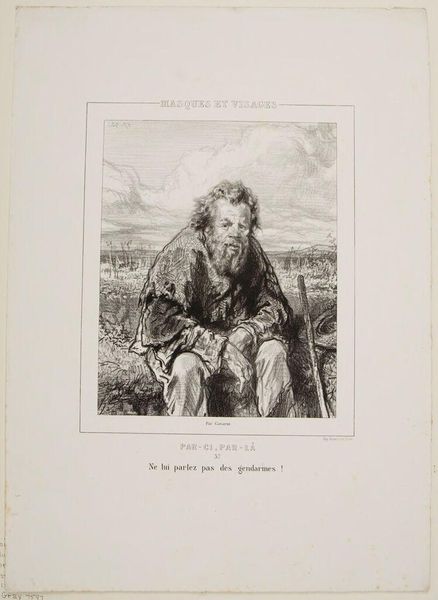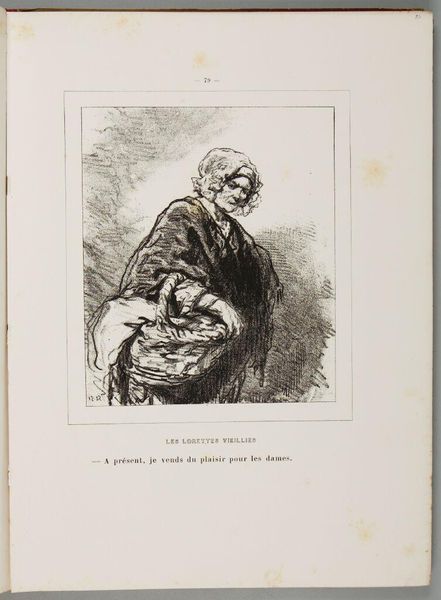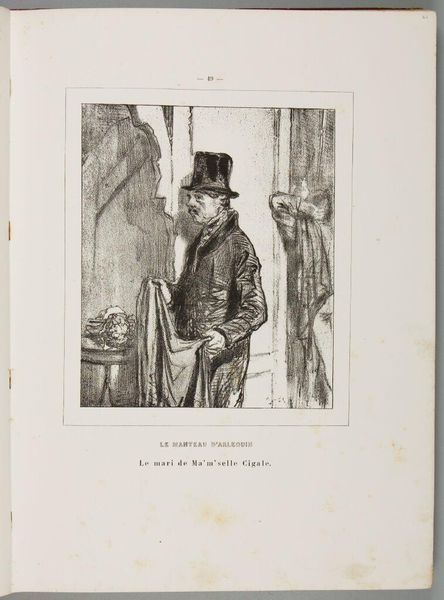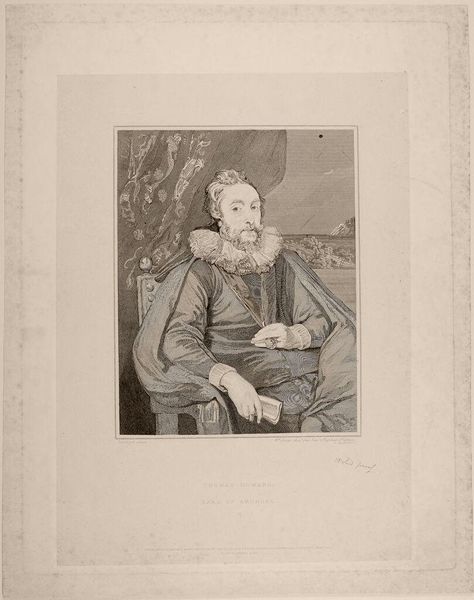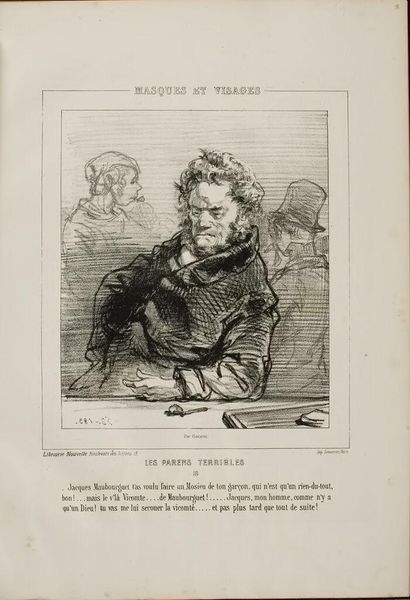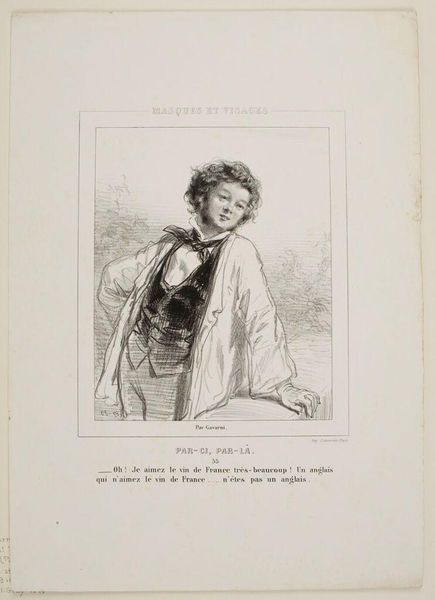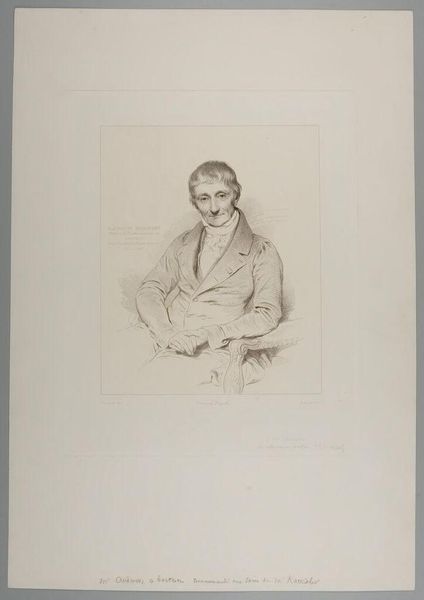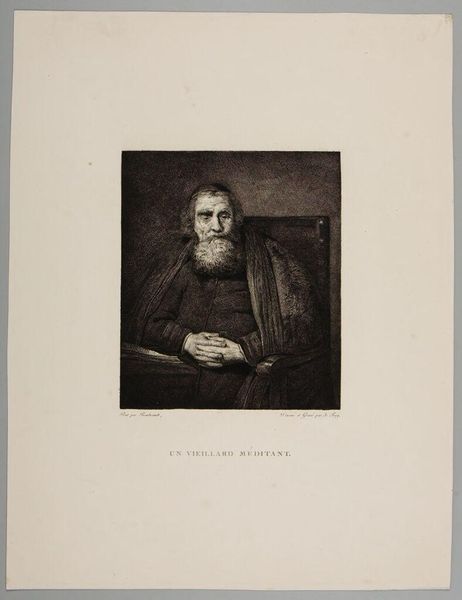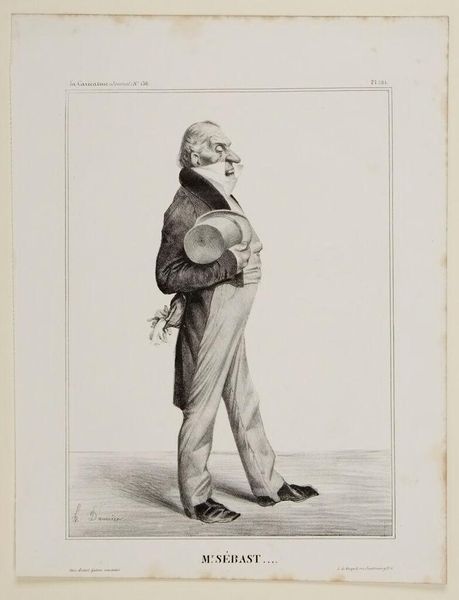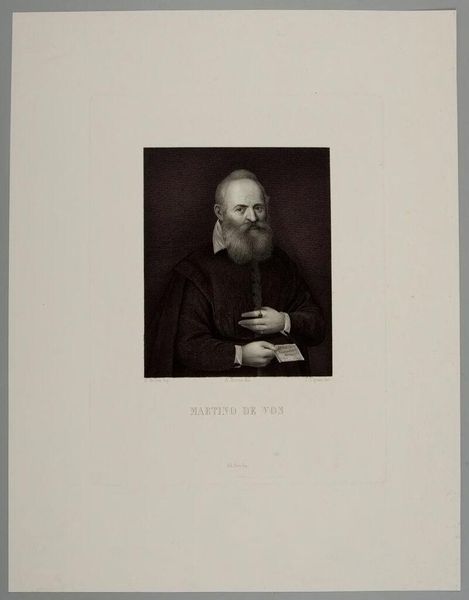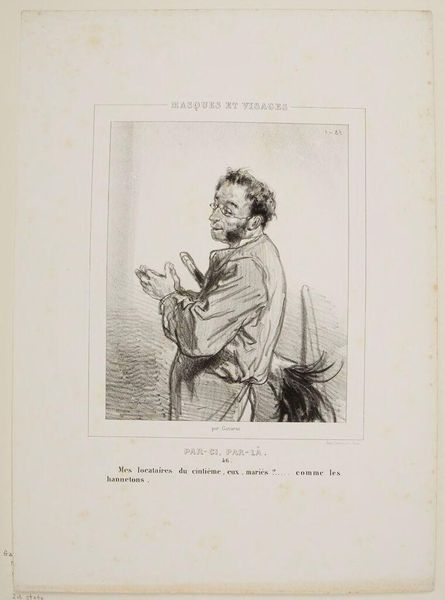
Copyright: CC0 1.0
Editor: This is Paul Gavarni’s drawing, "The lion became old," from around the mid-19th century. It’s a rather melancholic portrait of an aging man. What do you see in this piece? Curator: It speaks volumes about the disillusionment and decline that can come with age, especially for those who once held power or influence. Consider how Gavarni, working in a time of significant social upheaval, uses the metaphor of a lion to represent not just aging, but the loss of dominance within a changing societal landscape. What does it mean to be a "lion" stripped of its roar? Editor: So, it's not just about physical aging, but a commentary on societal roles? Curator: Precisely. Gavarni challenges us to reflect on how society treats those who are no longer deemed productive or powerful, prompting us to question the value systems that prioritize youth and strength. Editor: I hadn't considered the social critique embedded within the image. Thank you for highlighting that. Curator: My pleasure. It’s important to remember that art often serves as a mirror reflecting the anxieties and injustices of its time.
Comments
No comments
Be the first to comment and join the conversation on the ultimate creative platform.

